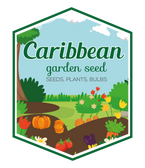
Grass Seeds - Little Bluestem ,Ornamental
FAST & FREE SHIPPING
Over 90% of our orders are processed and ship out by next business day.
We are currently processing and shipping most orders within 1-3 business days. (backorders not included) Due to high demand during the peak months of January to May, orders may require additional time for packaging /shipment.
Free shipping for orders over $54.95. Excludes live plants, fresh products And Stackable Black Plastic Nursery Crate
Shipping and handling charges will cover outbound freight and packaging materials. Fees are applicable to all orders, based on total order value pre-tax. Expedited services can be selected at Checkout with extra fees.
- Free shipping to lower 48 states on orders $54.95+
- (Most Items), excluding live plants, plant bulbs, and black plastic nursery crate.
- Safe Seed Pledge
- Satisfaction Guaranteed
- Select your desired size and/or color from the available options.
Little Bluestem is a summer ornamental grass that thrives in moist soil with a beautiful coppery pink and blue hue year-round.
Little Bluestem (Schizachyrium scoparium) - This Little Bluestem grass seed is a top choice for ornamental grass, favored by landscapers and homeowners alike for its versatility. Widely used in wildflower plantings, this native grass adds visual interest with its range of blue and green hues. In autumn, its colors transform to a vibrant red, complemented by fluffy, silvery-white seed stalks. Growing to heights of two to four feet, this waving grass creates a stunning landscape.
- Seeds per Ounce: 12,000
- Seeds per 1/4 Lb: 48,000
- Seeds per LB: 192,000
Little Bluestem is a durable, widespread native grass found mostly in the Central and Southern Great Plains. It is often seen alongside Big Bluestem, but is more resistant to drought and grows smaller, usually under 3 feet tall. The leaves are approximately 8 inches long and 0.25 inches wide. It provides reliable grazing and hay, and is beneficial for preventing erosion.
Sowing: Sow the little bluestem seeds directly into compacted soil in either late fall or early spring, ensuring they are planted just below the surface. Maintain light moisture in the soil until germination, as these Schizachyrium Scoparius seeds require it for successful germination.
Growing: Water seedlings regularly until established. Prefers dry, well-drained soil, tolerates drought and heat, adapts to various soil types, and prefers poor soil. Spreads by rhizomes and self-seeding. Good for erosion control, attracts butterflies.
HOW TO GROW GUIDE
LET OUR CUSTOMER SPEAK FOR US

![[Seeds] - Caribbeangardenseed](http://caribbeangardenseed.com/cdn/shop/files/gift-card-gift-card-1_1024x1024_dfa857db-9150-4315-a362-7f0bb3fb9c47_60x28.png?v=1722895789)





